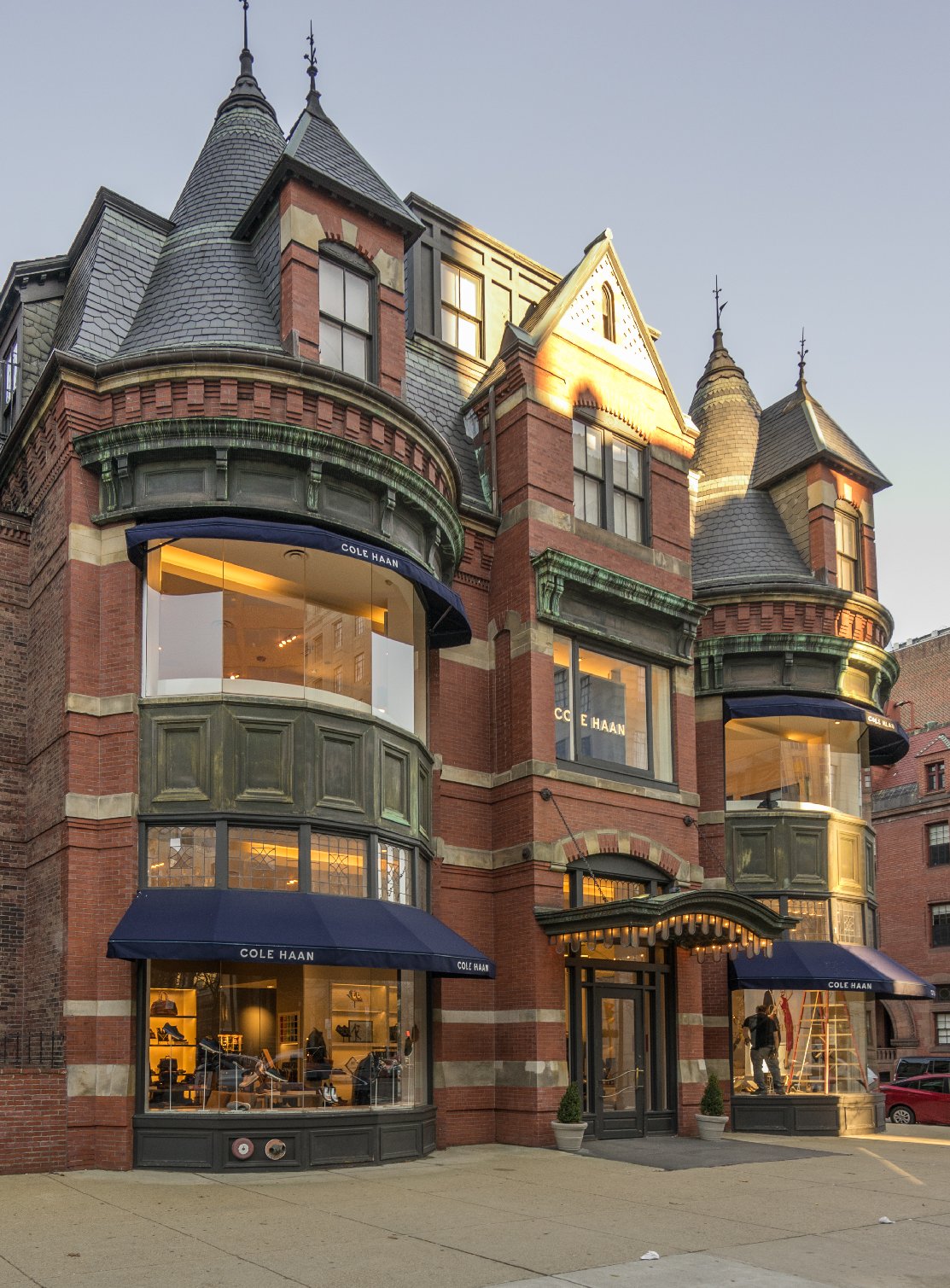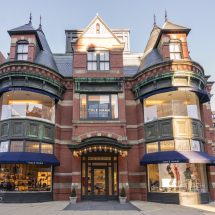This article is a contribution from Joseph Cornish, Director of Design Review – Preservation Team of the City of Boston’s Environment Department .
Located on the corner of Clarendon and Newbury Street, the Charles Amos Cummings House is a Victorian brick row house built in 1871 and designed by architect and Boston native Charles Amos Cummings (1833-1905) as his own personal residence. This highly-visible residence served as an example of Cummings’ work winning him the commissions of several high-profile buildings in Boston including: New Old South Church located in Copley Square and completed in 1875; and the Cyclorama Building located in Boston’s South End and completed in 1884. Cummings lived at this address until his death in 1905, and his wife remained in the house until her death in 1922. The house was then converted into retail and office space which it remains today.

The house is an early and ambitious example of the Queen Anne style of architecture which was influenced by the buildings of Medieval England. Queen Anne style features of this building include a complicated roof system with multiple dormers and gables; towers with conical roofs; the contrasting use of building materials including salmon-colored brick, tar-dipped bricks, light-colored sandstone, and three different colors of slate; multiple patterns of brickwork; and several varieties of multi-paned windows.
Prior to moving to 109 Newbury Street, Cummings and his wife, Margaret Kimball Cummings (1841-1922) resided at 9 Union Park in Boston’s South End neighborhood. Following his graduation from the Rensselaer Polytechnic Institute in Troy, New York, Cummings joined the Boston architectural firm of Gridley J. F. Bryant in 1857. In 1861 Cummings and his work colleague Willard T. Sears (1837-1920) founded the firm of Cummings and Sears in 1861.
The Charles Amos Cummings House is located at 109 Newbury Street
About Joseph Cornish
Joe Cornish recently joined the Preservation Team of the City of Boston’s Environment Department as the Director of Design Review. In this position he oversees proposed changes in three of the city’s nine historic districts, and supervises staff responsible for the other districts. Prior to working for the city Joe worked for Historic New England from 1998 to 2016 where he administered and enforced the preservation easements that organization holds on 100 historic properties. He is the past president of the New England Chapter of the Society of Architectural Historians, and the former co-chair of the Belmont Historic District Commission in Belmont, Massachusetts. Joe has written articles and lectured frequently on topics related to architectural history, maintaining historic buildings, and preservation easements. He received his M.A. degree in Preservation Studies from Boston University, and his B.A. degree in History and Art History from the College of the Holy Cross.



